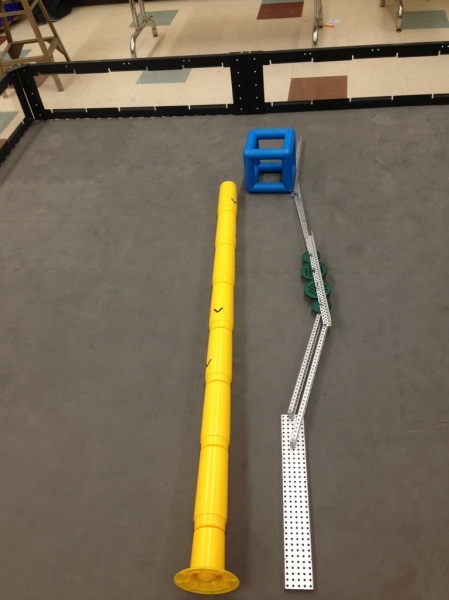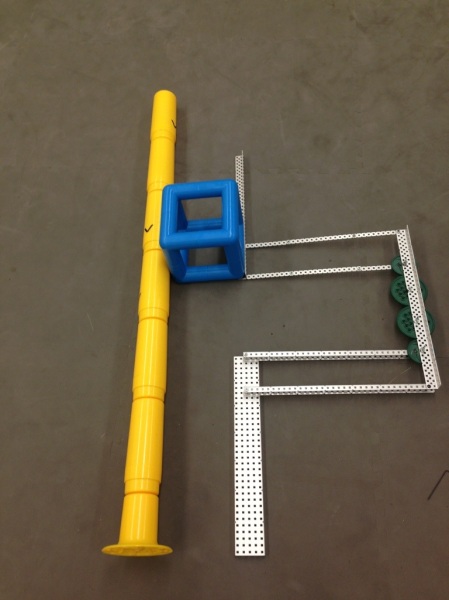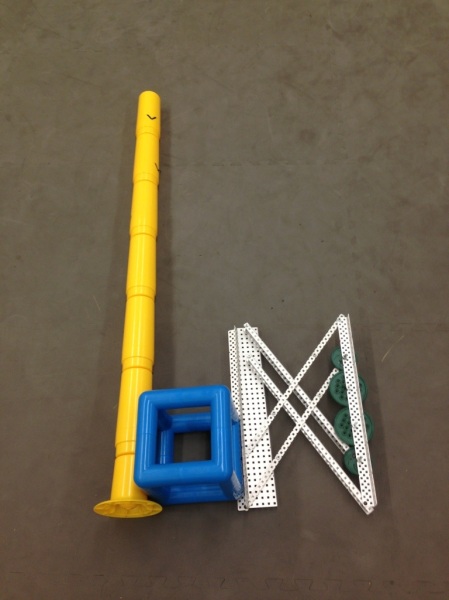Here are some pictures of how a double reverse 4 bar using Vex 35 hole link arms. The main challenge is constructing a stable geometry. The lift has a middle link gear train to move the upper 4 bar in sync with the lower 4 bar.
Torque
Approx torque (inlb) required = 2*l_arm*(W_payload_lbs + W_lift_lbs + W_manipulator_lbs)*cos(angle)
height_delta = 2*l_arm*( sin(angle_finish) – sin(angle_start))
where l_arm is the distance between pivots of the arms in inches, W_payload_lbs is game piece weight, W_lift_lbs is the weight of the 3 arms used in the lift , W_manipulator_lbs is the weight of the gripper attached to the upper arm and angle is defined relative to the horizontal. The max torque occurs when the arms are horizontal or angle • 0 .
If you want to lift 4 1 lb Skyrise cubes with a 3lb lift weight , a 1 lb gripper and a l_arm of 16 in you would need about 256 in lbs of torque.
As a rule of thumb I use 6 inlb of torque per motor for sizing the number of motors. This assumes 2 inlbs of elastic support , 1 inlb of friction and 3 inlbs from active current (about .9 amps) hold per motor used. With these assumptions a 10:1 gearing and 4 393 motors might do the job. The lift would take about 5 seconds to go full travel. I’ll show a more exact torque derivation later.
Height change
With an angle_finish = 75 deg and the angle_start= -60 deg a 16 in arm reaches 59 in. A 16.5 in arm reaches 61 in. With a chain bar you could clear an in or two more. So
So 




 Posted by vamfun
Posted by vamfun